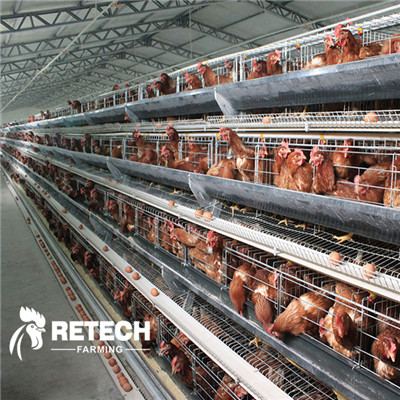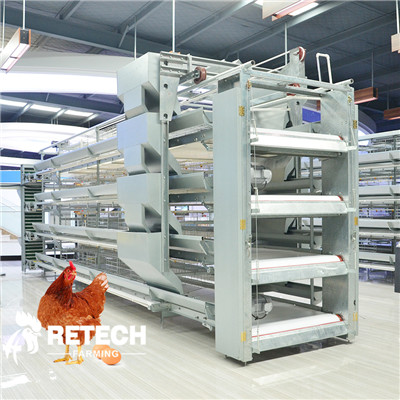How to do laying hens in cages?
We generally have two ways of raising chickens, which are free-range chickens and caged chickens. Most laying hen farms use caged methods, which can not only improve land utilization, but also make feeding and management more convenient. Improve the efficiency of manual egg picking.
So what should we pay attention to when we put laying hens into cages?
1. Age of cage
The best age of laying hens is generally between thirteen weeks of age and eighteen weeks of age. This can best ensure that the weight of young laying hens is under normal standards, and at the same time, it can improve its egg production rate during the breeding process.
What we should pay attention to is that the latest cage loading time should not be later than 20 weeks of age; and in the case that the chickens grow well, we can also continue to screw the cage when they are 60 days old.
When filling the cages, we also need to group and fill the cages in batches according to the different growth conditions of the laying hens.
2. Facilities and equipment
After the laying hen is caged, we still have to ensure its original growth environment, otherwise it will also affect its growth and production. We need to be equipped with the corresponding breeding equipment and install various breeding facilities before loading the cages; in addition, these facilities and equipment must be strictly overhauled and replaced to avoid problems in the later breeding process.
3. Catch chickens scientifically
When putting laying hens into cages, we must be scientific, the movement should not be too large, and the hands and feet must be light, and the force must not be too strong. The production impact is very large.
In chickens that are generally stressed, their appetite will be reduced, and then they will gradually weaken, seriously affecting the health of the flock.
4. To prevent the increase of the incidence rate
The operation of laying hens must be correct when loading the cage, and after loading the cage, we must pay attention to the change of temperature difference, and control the temperature reasonably.
It is best to cage at night, and to improve feeding after caged, reasonably configure nutrient-balanced feed, and scientifically carry out chemical control, which can prevent the occurrence of some diseases and improve the quality of laying hens.
5. Prevention and control of parasites
In order to ensure the health of laying hens and later production, we need to deworm them.
Especially when the laying hens are 60 days old and 120 days old, which is when we are caged. Then, when packing the cage, we must feed the deworming medicine according to the scientific instructions for the prevention and control of parasites.
6. Keep the flock relatively stable
Keeping the chicken flock relatively stable is actually very simple, that is, as far as possible, the chicken flocks in the same shed and the same circle are caged.
Under normal circumstances, when unfamiliar chickens enter a new environment, the phenomenon of scramble for food, water, and position will occur, which has a great impact on the production of laying hens, so it is best to avoid this situation.
The above are the precautions for caged laying hens. We must avoid disturbing the flock during the operation, pay attention to the capture method, and do not use too much force. It is best to install the cage at night. After the cage is installed, attention should be paid to the strict maintenance and replacement of the equipment, so as not to affect the growth of the laying hens.

